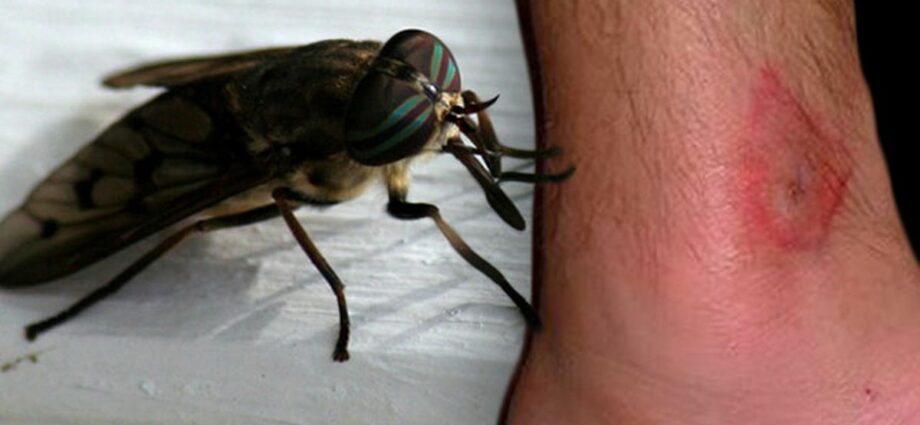Horsefly bite: what is the risk of allergy?
The gadfly is one of the blood-sucking arthropods, insects that use their mouthparts to sting or “bite” their prey. This bite is known to be painful. Rare allergic reactions with edema, urticaria or even anaphylactic shock are possible.
What is a gadfly?
The gadfly is an insect that is part of the blood-sucking arthropod family. It is a large, dark-colored fly, the best known species of which is the ox gadfly and of which only the female, hematophagous, attacks certain mammals as well as humans by biting and sucking. .
“The gadfly uses its mouth parts to” bite “their prey, explains allergist Dr. Catherine Quequet. Thanks to its mandibles, it tears up the skin allowing the absorption of a mixture composed of cutaneous debris, blood and lymph. The formation of a wound follows with the formation of a crust ”.
Why does it sting?
Unlike wasps and bees which sting only when they feel attacked, the gadfly “stings” simply to feed.
“Only the female attacks humans, but also mammals (cow, horses…), in order to ensure the maturation of her eggs. The female is attracted to dark colored objects and carbon dioxide emissions during human activities, for example, such as mowing, cutting or mechanical weeding ”. For his part, the male is content to feed on nectar.
Horsefly bite: symptoms
The most common symptoms
Symptoms of a horsefly bite are sharp pain and localized inflammation: in other words, a red spot forms at the bite. The skin is also usually swollen.
In the vast majority of cases, a horsefly bite will not cause more symptoms. They will go away on their own after a few hours.
Rarer cases
More rarely, a horsefly bite can also cause a more or less severe allergic reaction. “The substances that make up horsefly saliva are essential. They make it possible to anesthetize the stung area, to have a vasodilating and anti-aggregating action. In addition, there are allergens, some of which may explain the reactions of cross allergies horse-wasps or wasp-mosquito-horsefly ”.
Rare allergic reactions with edema, urticaria or even anaphylactic shock are possible. “In the latter case, it is an absolute emergency that requires calling the SAMU and quickly injecting an adrenaline treatment through an auto-injector pen. Never go directly to the emergency room but put the person to rest and call 15 ”.
There is no specific desensitization of the horsefly.
Treatments against horsefly bite (medicinal and natural)
Disinfect the affected area
In the event of a bite, the first reflex to have is to disinfect the affected area with an alcoholic compress. If you do not have one with you, you can opt for the application of Hexamidine (Biseptine or Hexomedine) or in the meantime clean the lesion with water and soap without perfumes. “In the event of a moderate allergic reaction or associated symptoms, you can consult a doctor who may prescribe topical corticosteroids if necessary.”
Taking antihistamines
Antihistamines can be taken as a supplement to reduce itching and local edema.
Warning: do not do it in the event of a horsefly bite
The application of ice cubes is to be avoided. “Ice cubes should never be applied to hymenoptera bites (bees, wasps, ants, bumblebees, hornets) or to bites of blood-sucking insects (lice, bugs, mosquitoes, horseflies, etc.) because the cold will freeze the substances on the spot “.
Essential oils are strongly discouraged “because of the allergic risks, all the more so on abraded skin”.
How to protect yourself from this?
Horseflies like wet skin. Here are some tips to avoid getting bitten:
- After swimming, it is recommended to dry off quickly to avoid attracting them,
- Avoid loose clothing,
- Favor clothes in light colors,
- Use insect repellents “knowing that there are no specific products for horseflies. We must also be careful not to poison children with these products ”.










